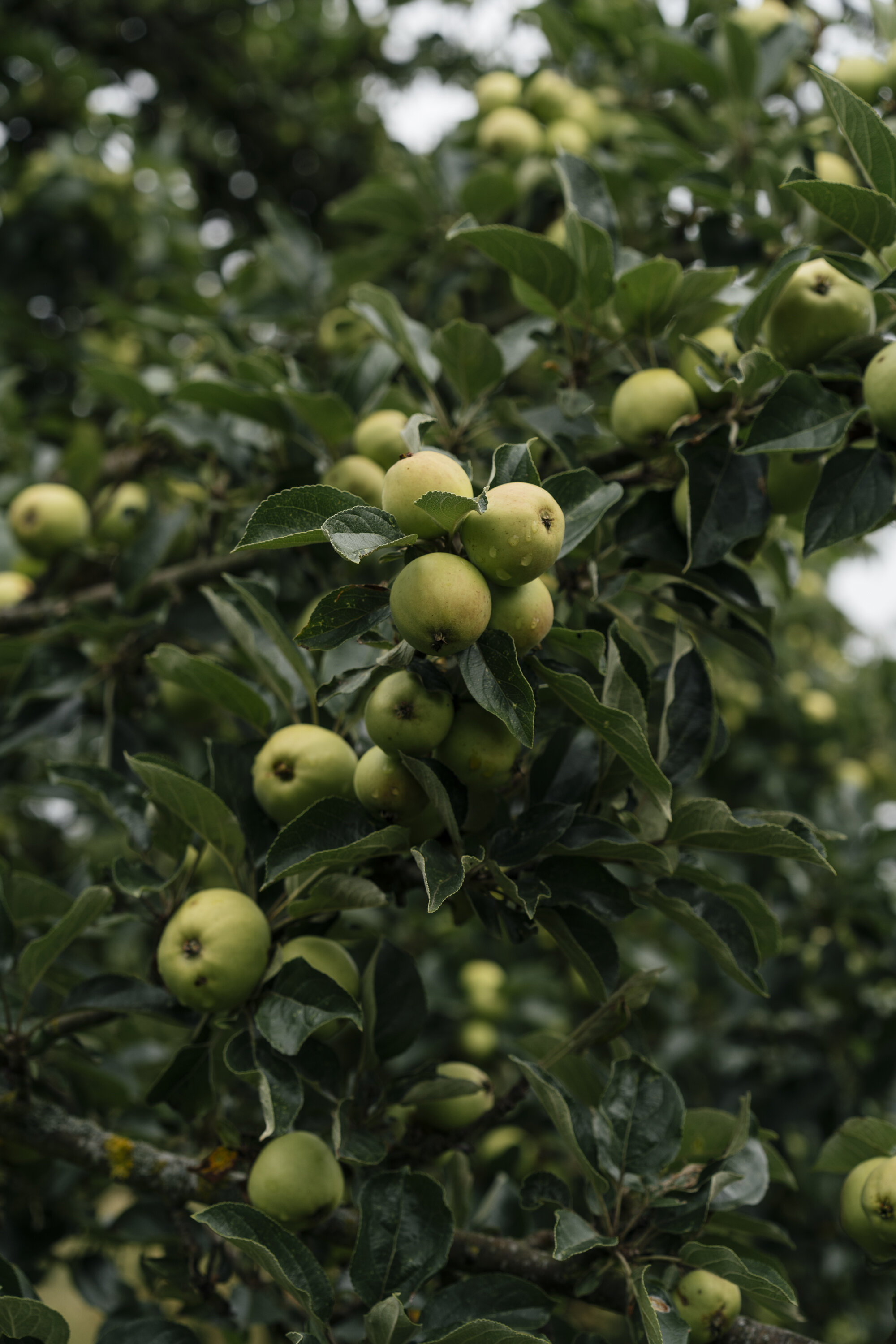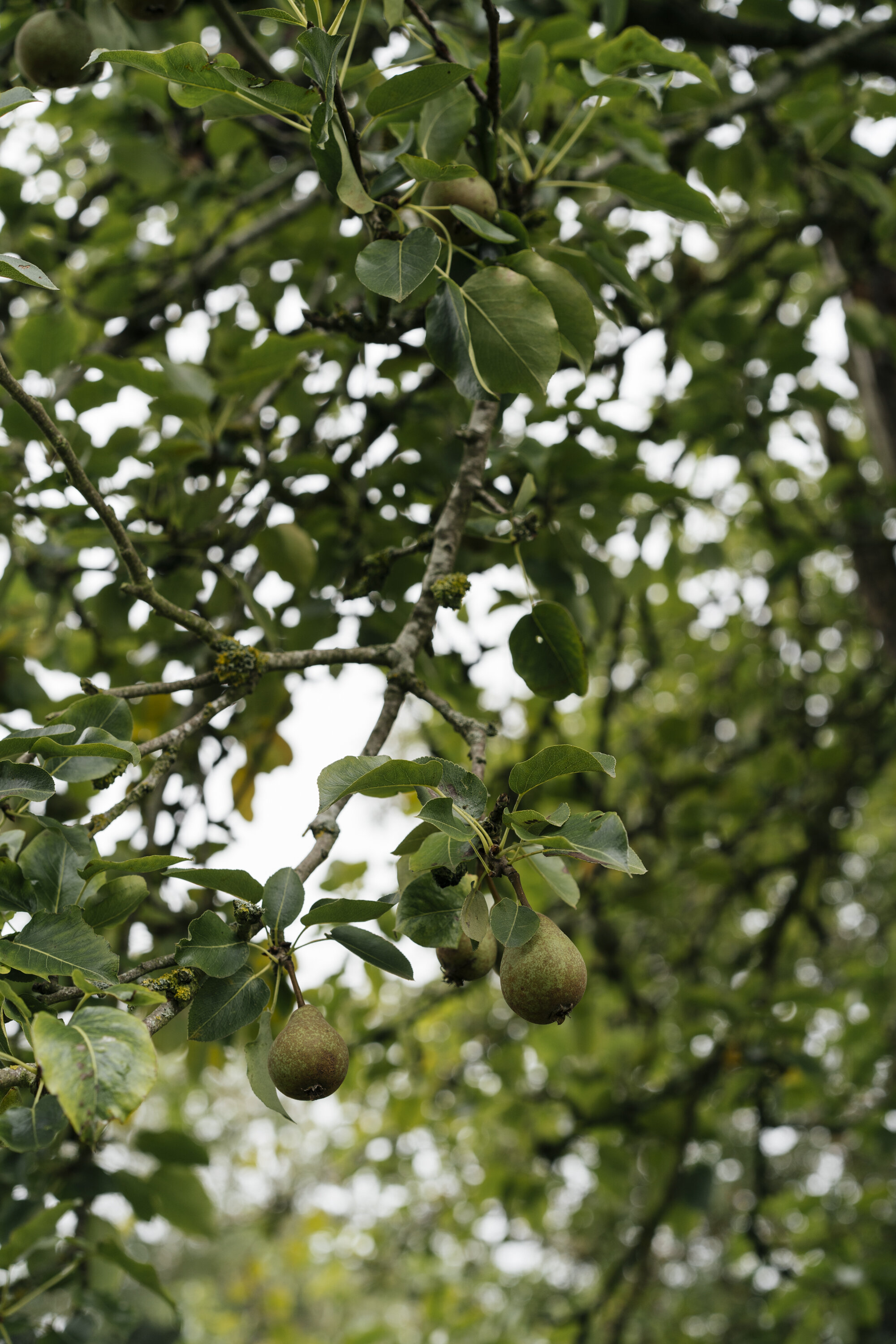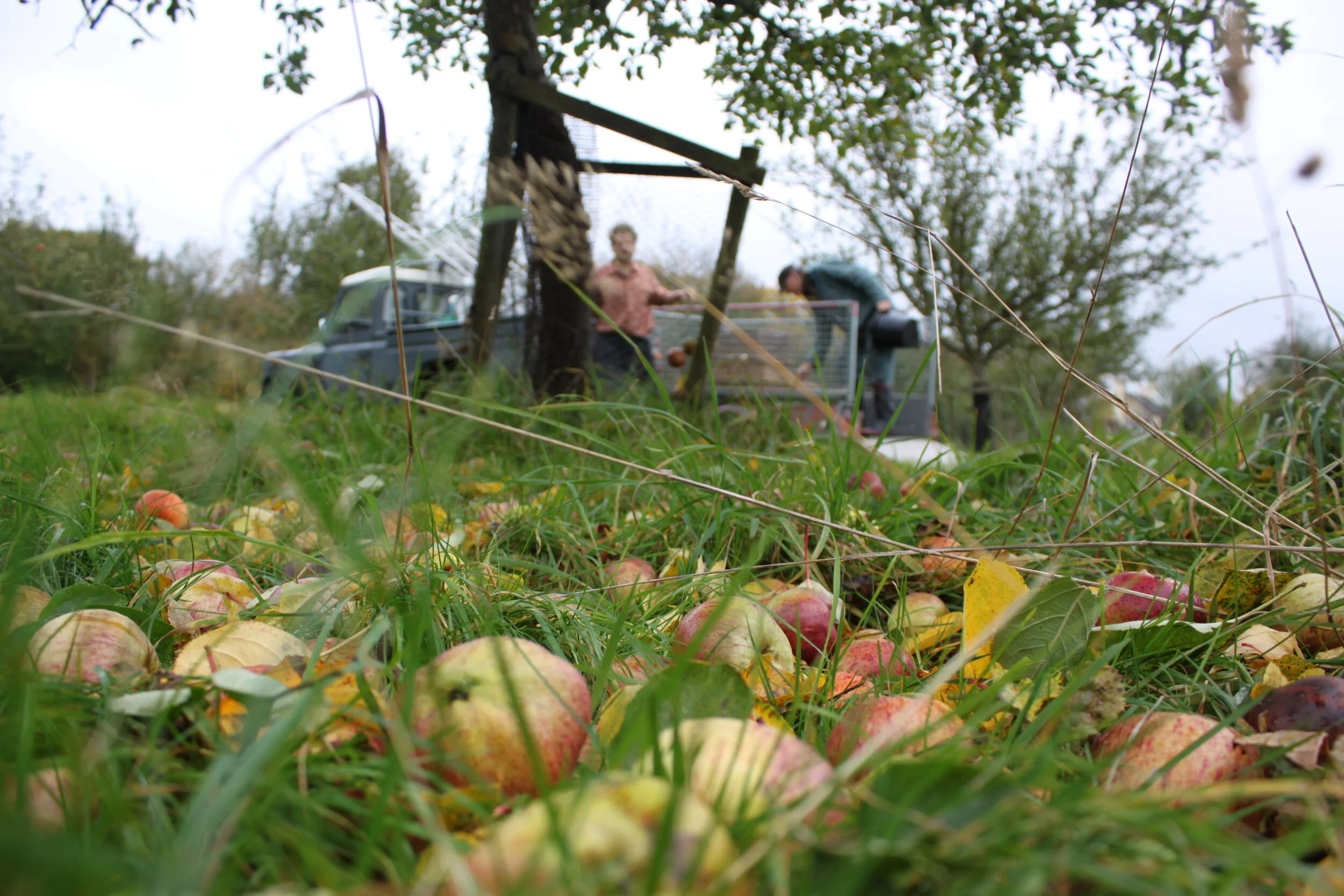The Analogue Perry — Cider and Perrymaker Kevin Minchew in Ashton Cross, Gloucestershire
Unless you happen to be a proper cider head, or a CAMRA volunteer from the early 90s into the 2000s, Kevin Minchew is not a name that many cider drinkers will know.
This is a travesty.
For a while, Kev was making some of the best ciders and perries in the country. Don’t just take my word for it—his host of awards speak volumes: Big Apple Cider Champion (1993) and Perry Champion (1994 & 1995), Museum of Cider Overall Champion (1999), Royal Bath & West Show Dry Cider Gold Medal (2002) and CAMRA Perry of Britain (2002). And, as a marker for his outstanding contribution towards cider and perry, CAMRA awarded him its annual Pomona award in 1999.
Photography by Nicci Peet
In the early ‘90s, the Three Counties of Herefordshire, Gloucestershire and Worcestershire were starting to see the first inklings of a traditional cider revival. This was in no small part down to the actions of Jean Nowell, who started making cider at Lyne Down in Much Marcle, Herefordshire, after moving there in the mid-’80s; learning from the “old boys” of the surrounding farms.
At the same time, in the village next door, Jackie Denman wanted to celebrate the orcharding and cider making heritage of the parishes of the Marcle Ridge, so in 1989 held the first Big Apple celebration.
The ultimate outcome of this event was the creation of the Big Apple Cider and Perry Trials in 1992. Held on the first May Bank Holiday in a small village hall in the gently rolling Herefordshire countryside, this is quite simply one of my favourite events in the world. Where else could you get some of the finest exponents of their trade, from biggest to smallest, peer reviewing each other’s products until things get fuzzy? It’s lush.
Among the cohort of cidermakers who cut their teeth in this competition back in the ‘90s were Mike Henney (Hennye’s Cider), Mike Johnson (Ross-on-Wye), James Marsden (Gregg’s Pit) and Tom Oliver of the eponymously named cider and perry producer.
Today their names are synonymous with the highest levels of revery—bold expressions of time and terroir. And Kev was probably the best of the lot for a while. But why isn’t Mr Minchew spoken about in similarly hushed tones?
“Kevin always stood out from the crowd in the quiet understated way he got on with cider and perry making,” Tom Oliver tells me. “He hunted high and low for varieties and then took only the best forward and was very happy to release glorious still ciders and perries. I wish he was still making, because I would be drinking.”
***
I had my first taste of Minchew’s in about 2004 (I recall a Kingston Black single variety) during the height of my early cider fanboy phase. This escalated into visiting cidermakers; I wanted to see, taste and learn what was integral to the drinks they made. Not wanting to be an obstruction to people trying to get on with milling and pressing apples, it took me a while before I finally plucked up the courage to give Kev a ring to see if I could pay him a visit. Before I knew it, I found myself meeting the man himself amid the surroundings of rustic, teetering sheds in Ashton Cross, Gloucestershire in October 2009.
Having had a look at the press (an old twin screw mounted on an ancient stone bed) and the barrels (manifold and with a level of “flora” growing on them), Kev rifled around in the shed and emerged with a punted bottle.
“Come and have a try of this Stinking Bishop perry”, he merrily suggested as he cracked it open. I’d never previously tasted a perry made in the full méthode traditionelle fashion, and I was humbled that Kev was willing to open a bottle for me—basically, a stranger.
The bubbles were perfection, lightly tingling and flavour enhancing. A brisk acidity jumped off the tongue before stone fruit juiciness, and a boozy breadth hit, finishing with a gentle smoke. The combination of the gold foiled bottle, the perfect prise mousse and the supremely balanced and intense perry make this perry my default response to “what’s the best drink you’ve ever tasted?”
It wasn’t just about the liquid itself, but the experience. The feeling of being in the presence of someone who really cared about the heritage, the orchards, the fruit and the story the drink told. It was utterly magical.
Whereas the Tom Oliver’s and Mike Johnson’s of the world began to step up in the aftermath of the “Magner’s effect” of 2006, it felt like Kev was already on the wind down. I emigrated to New Zealand in 2013, and by the time I had returned to the UK in 2016, Kev and his ciders and perries had effectively disappeared. Not only could I not find any of his bottles, but the Three Counties Cider community hadn’t heard from him in some time.
Fast forward to summer 2020: the world is in chaos, gripped by the weirdness and supreme challenges of Covid-19. Naturally, we all sought things to bring us comfort, security and joy. It also prompted a desire to reach out to folk that I hadn’t spoken to for a while. So, 11 years after the first time, I plucked up the courage to ring Kev...
***
On a sultry late August morning I’m directed to a smallholding in the middle of nowhere, at the heart of the Severn plain near Tewkesbury, Gloucestershire. It’s something out of The Darling Buds of May: rusting Gulag tractors, wooden carts on the precipice of collapsing into a rotten heap, and brambles clambering through the adjacent orchard with such vigour they look like they are making big to reach Gloucester by the end of the year.
““The orchards are part of an old way of life, a natural way of life. It’s all linked.” ”
And there he is, wearing a smart shirt, albeit with a smattering of blood in the sleeve from an unattended cut, rolling a brown, liquorice-paper ciggie and with a slightly louche air about him (in the most engaging and innocent way).
“Alright Gabe,” he says. I want to embrace him, but we’re being good citizens in a pandemic, and resist the urge.
There’s a nervous, stifled edge to our conversation. But we soon find a safe space by wandering into the orchard and having a poke around at the trees (Dabinett, Yarlington Mill, Cat’s Head amongst many others) and the conversation begins to flow. I pride myself on being able to ably identify much of England’s glorious native flora and fauna, but to follow Kev is to follow a druid communing with Mother Earth herself.
“Did you know that there are male and female mistletoe plants?”
“No Kev.”
“Did you know that ragwort was introduced as an ornamental plant to the Oxford Botanical Gardens in the late 1700s, from where it escaped into the wild and spread rapidly throughout the Midlands and southern half of the UK aided by the newly emerging railway system?”
“No Kev.”
“Did you know that the Green Woodpecker is traditionally known as the ‘Rainbird’ and that they will break open an ant’s nest on the ground to gobble them up, but not before it allows a few to consume the lice that are bothering it?”
“Oh, come on Kev, give me a chance!”
“I’m a country boy, you see,” he says. “The orchards are part of an old way of life, a natural way of life. It’s all linked.”
Upon returning from our lap of the orchard, I cut to the chase and ask what he’s been up to all these years. Why can’t we find his cider any more?
“I’ve never made cider for anyone else, just for me,” Kev says. “It’s not about money, it’s about upholding a cultural responsibility to the land, to this place”. To pick fruit from these orchards that rural folk have done for generations before is incredible. You can feel their presence.”
In his own words he was living “hand to mouth,” the traditional farm labourer’s way—working hard, eating simply and drinking the product of the land from his own hands. But he recognised this couldn’t go on forever, so the traditional cidermaking life is having to take a back seat while he focuses on the day job (somewhat at odds with his druidic persona, he’s an engineer working for the MOD) and a settled home life.
He still makes a few gallons with his brother, Stewart, one of several siblings, whose property we’re standing on, but that mostly gets enjoyed at home or by the occasional, lucky punter when a polypin makes its way to a local free house or CAMRA festival.
“I think keeved stuff from Bartestree Cider is out of this world. It shows such skill”, he instantly proffers when asked what ciders he is enjoying these days. “I’m also still a fan of Mike Johnson’s cider, especially his big bittersweet ciders like Dabinett and Harry Master’s Jersey. But really, I’m quite happy drinking the perry”.
My ears twitch at the mention of perry, and I enquire whether he is referring to that Stinking Bishop?
A twinkle in Kev’s eye signals I’ve hit the jackpot. It so happens that in 2002 he got a not inconsiderable amount of this perry bottled for secondary fermentation, and that every year, he gets a few cases worth disgorged. My memorable taste from back in 2009 had since spent a further six years on lees—a fairly lengthy period of time for such a beverage. The glass of freshly disgorged perry that is suddenly being thrust in my hand had been sat on the lees for a mind-boggling 18 years!
By any reasonable means, this perry should be well past its prime. In the main, cider, and especially perry, do not have the level of alcohol, acidity or tannic structure to benefit from extended ageing. I expect flabbiness at best and grubby, dirty foulness a greater likelihood. However, in a similarly confounding way as its creator, it has glided handsomely into old age. The autolysis (the breakdown of yeast in the bottle as a result of the secondary fermentation—as with Champagne) provides toasty, honeycomb and umami gorgeousness, but with remarkable, honeysuckle freshness upfront.
I find myself grinning inanely. What an amazing feeling it is to try this momentous drink once again. How wonderful that it lives up my own pent-up hype. What I admire about Kev is that he knew the quality, and crucially the value, of this perry from the outset, and so priced it accordingly back then—the princely sum of £10. And guess what? Not many people bought it. No bother, Kev was quite happy to hang onto it and drink it himself. He never felt the need to flog it off at a price that he didn’t think it was worthy of.
The concept of charging £10 for a bottle of cider or perry fifteen years ago, or even 5 years, was anathema to most producers, and certainly to most punters. But the landscape has changed drastically in that time. We now have a whole raft of curious consumers, eager to discover new drinks which are intense of flavour, intriguing of creation and full of folklore. Maybe, now is the time, 19 years after its creation, for Kev’s Stinking Bishop perry to finally be fully appreciated for the pioneering drink that it is?
“I’m not too fussed, really. I only ever made it for myself and to share with those who I thought would enjoy it,” Kev responds to my excitement. “The most important thing is I’m doing my bit to keep this cultural heritage alive.”































